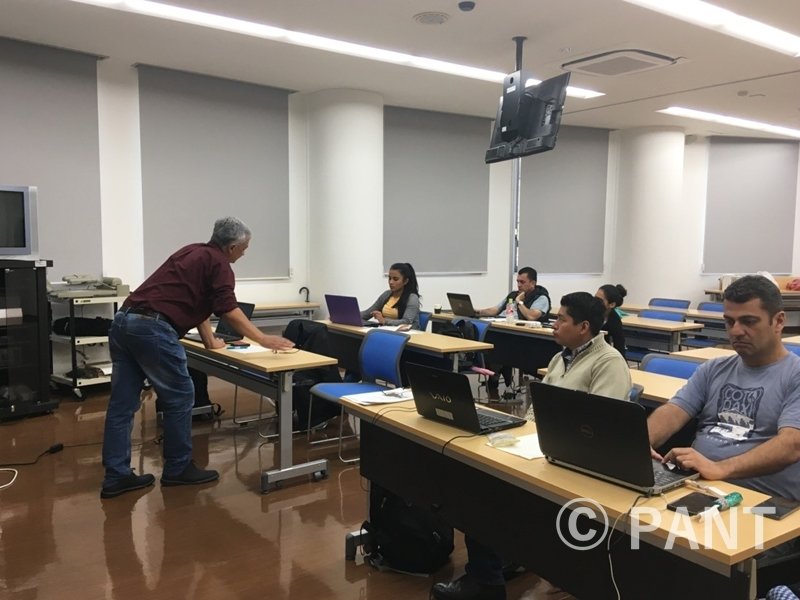Trainees report:Kanazawa Training Program:October 16-17, 2019
Miguel Ángel Echeverría Tager
(2019/10/18)
We have two days to prepare the projects we are going to present. Some of the trainees are still wondering how they are going to phrase the projects they want to present; others have had the idea all along and are just about ready to put it down on paper. Wednesday, October 16 and Thursday, October 17 were two days to be shut out of the world and focus on the presentation of these projects. Intensive thinking and instructive discussions among all of us were aimed at presenting our best possible work. After all we had seen, after all we had learned, after all we had experienced, we were not going to be happy with nothing less than the best.
The discussions began. Projects are going to be presented individually, but they should all be related. This is team work in a different sense: we all work out our projects, but the projects working together will make a greater whole. After preliminary ideas were put on the table, discussion groups were formed to establish how one project idea complemented another and the intellectual machinery began to turn.

The group of trainees during these intensive days of work before the actual presentation.
Ms. Ingrid Morales had a hard time finding the right limits to what she wanted to do. There are so many things that I would like to do now, she commented, that I don´t know how will they all fit in one single project. Coming from Ixlú, a community located in a naturally beautiful location, she decided to work on a project that could bring economic growth by conjugating the rescuing of the Salpetén pond, one of the natural touristic attractions that the community has almost forgotten about, and the revitalization of the archaeological park that is in abandoned conditions. Information to guide the tourists, interpretative trails, and a campaign to plant trees in deforested areas were her main proposal.
Mr. Francisco Cano also had a hard time finding a single project that seemed feasible, but finally set for a simple and direct project: the refurbishing of a touristic lookout at El Caoba, a town just north of Ixlú, a few kilometers up along the touristic corridor to Tikal National Park. What we saw at Ogi-machi´s castle ruins touristic lookout, and obligatory stop for every tourist going in to Ogi-machi, that is what I want El Caoba to be.
In contrast, Mr. Carlos González, Ms. Cristel Pineda and Mr. Cristian Aguilar seemed to go directly to the point they were looking for.
Ms. Cristel Pineda set her mind on establishing a touristic itinerary that could take tourists going or coming from Tikal through the workshops of artisans along the various communities whose crafts have not received the recognition they deserve. After visiting the Yamato Soy Sauce Brewery, Ms Cristel Pineda decided that the best strategy for selling crafts is to lead the tourists first to see the process of manufacturing, and only then take him to buy the finished products. It might even be possible to take tourists to an activity where for a couple of minutes they can become the artisan, create an artisanal object, and take it home as a souvenir.
Mr Carlos González already had an idea for a project that could definitely complement the above mentioned project at Ixlú. Everywhere we have been in these days, there is always information available for tourists —he said. Whether it is a pamphlet, an illustrated map or a touristic guide, tourists always have information about the place they are visiting. His project revolves around this idea of training people to be capable of producing such texts.
Mr. Cristian Aguilar, the only trainee coming from Honduras, presented a project related to the education of the communities around the maya site of Copán, a World Heritage Site. He believes that by educating people and teaching them the importance of the archaeological park they posses, they can start to use the park for their own benefit. The most important step —he insisted— is raising the awareness of the value that a World Heritage Site possesses.Only then can people begin to take care of the park and use it for their own economic advantage.
It was hard work, but by Thursday afternoon all the projects were ready. We rehearsed our presentations in front of Dr. Seiichi Nakamura who commented on the weak points and gave useful advice.
